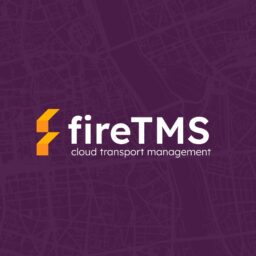Artificial intelligence is a game-changer in many industries, including TSL. From process automation in TMS systems to fleet management support to real-time data analysis. Get to know how modern technologies, such as the AI assistant in fireTMS, are changing the daily work of carriers and shippers.
AI in transport and shipping management
Artificial intelligence (AI)-based tools help us on a daily basis at work, make it easier to write emails, check for errors in documents and assist us in other ways with our daily tasks. However, it is important to note that AI solutions are also used in specialised systems and their presence is not limited to the popular OpenAI, Google or Meta solutions. We can find some interesting examples of the use of this technology also in the TSL industry.
AI tools within TMS systems
Artificial intelligence in TMS systems has emerged quite recently, but it is already playing a significant role in transport and shipping management. AI tools now support, for example, order processing time estimation and transport route planning. Some systems use AI solutions also to support data analytics provided by GPS telematics and to search and analyse order potential in freight exchanges.

AI Assistant in fireTMS
In fireTMS, you will also find a solution based on artificial intelligence. AI Assistant is a tool that makes it possible to import orders into fireTMS and automatically create cargos. All you have to do is select the option to add a new cargo and then upload the order data file from your hard drive. The Assistant will process the document in seconds and fill in fields such as:
- Cargo name
- Loading and unloading dates
- Loading and unloading addresses with company names
- Cargo size and weight
- Customer cargo number
In addition, you can compare the original order document with the AI-processed data. The solution supports the following file formats: PDF, JPG, JPEG, PNG, GIF, TIFF, DOCX, TXT, ODT. It also works when documents in a foreign language are imported.
What are the benefits of using the AI Assistant in fireTMS?
- Time saving: it takes seconds to create a cargo
- Increasing work efficiency by automating tasks
- Faster order processing through faster cargo entry
- Eliminating errors in entering orders
Want to see how entering orders works in fireTMS with AI Assistant? Sign up for a free 14-day trial.
AI in the TSL industry
Artificial intelligence in the transport, shipping and logistics industry is not just about supporting TMS systems. It also provides advanced solutions that can support the management of supply chains, warehouse space or fleet vehicles. Above all, it is worth looking at WMS systems that have AI-assisted analytical modules capable of optimising the arrangement of goods for storage space savings and availability in correlation with the most frequent orders.
Another interesting example of application of AI in business analytics in logistics comes from tools for analysing and designing improvements in supply chain management, resulting in significant efficiency gains. Using AI to support customer relationships, which are available in CRM programmes, and to plan work in terms of predicting the number and types of orders is also significant.

Vehicle fleet automation – the next few years or the distant future?
One of the many visions for the use of AI that has been recurring over the years in predictions about artificial intelligence has been the creation of autonomous trucks require no human driver. This would solve the huge problem of the growing demand for professional driver services and the decreasing number of people who take on this challenging job every year.
This vision is already becoming a reality. Autonomous trucks are currently being tested in the US and Europe, also on the roads, with Mercedes-Benz among those conducting such tests. The problem that still needs to be tackled is to achieve the so-called fifth level of autonomy, i.e. to create a vehicle that can be driven solely by AI, without physical human involvement. In the vehicles tested, it is still necessary for the driver to be in the cab to take control in emergency situations. For this reason, the primary goal of putting completely unmanned trucks on the road is more likely to be a matter for the distant future.
Want to find out how to make your work in shipping and transport easier with a state-of-the-art AI-assisted fireTMS? Register and start your 14-day free trial!
Informacje od fireTMS są cenne jak ładunek
Regularnie dostarczamy informacji o naszym systemie oraz na tematy z branży TSL.
Zapisz się do newslettera i bądź na bieżąco.

fireTMS team
The article was written by the fireTMS team, based on their knowledge, experience and awareness of the TSL industry.
